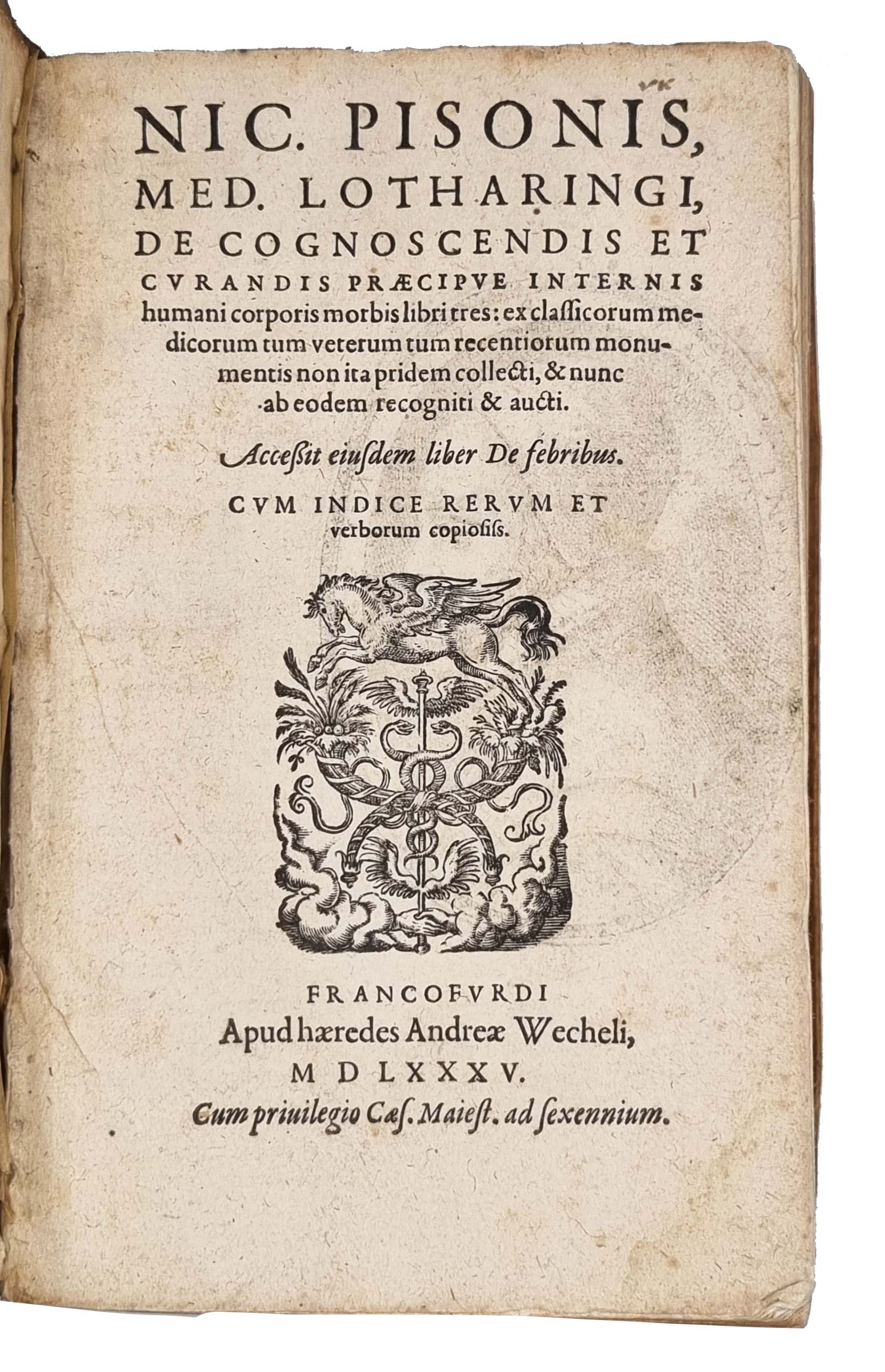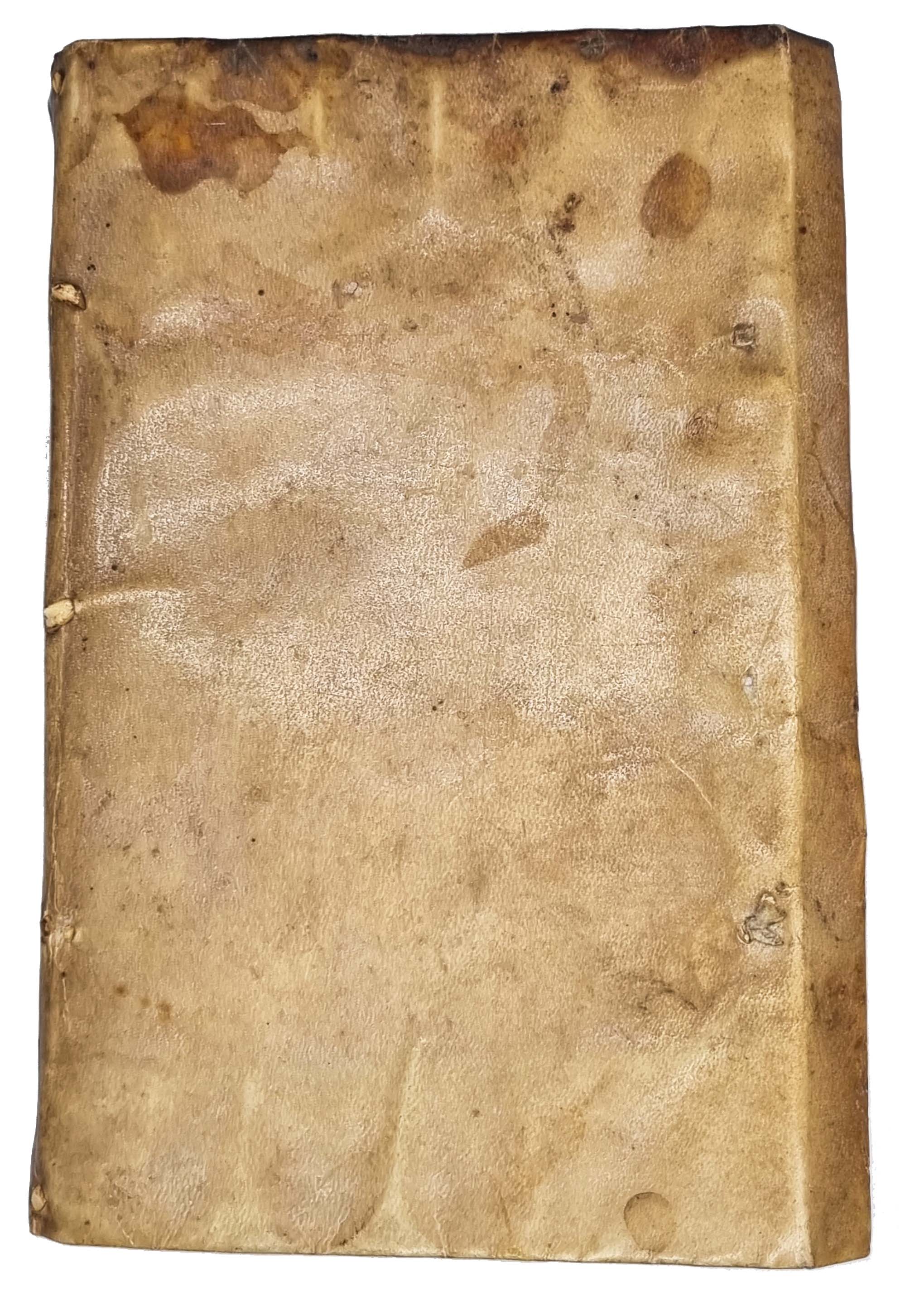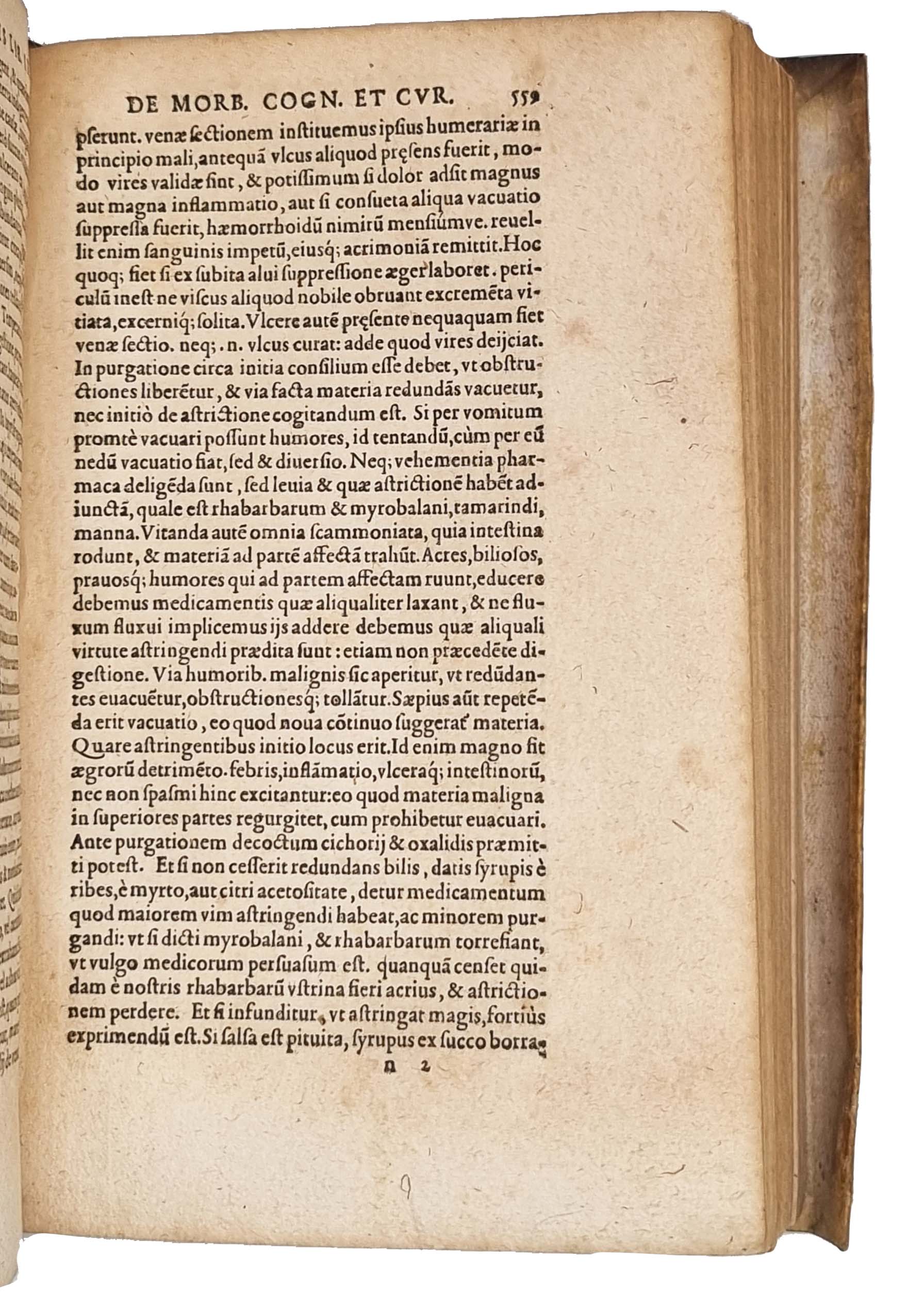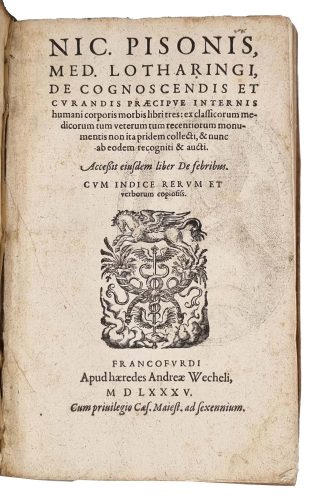LE POIS, Nicolas.
De cognoscendis et curandis præcipue internis humani corporis morbis libri tres [… ] Accessit eiusdem liber de febribus.
Frankfurt, heirs of Andreas Wechel, 1585£4,500.00
8vo, pp. (xxxii) 874 (iv) 875 – 968 (xxxii). ‘De febribus’ with separate t-p. Roman and italic letter, occasional Greek. Woodcut floriated initials, charming headpieces and tailpieces with foliage and grotesques. Printer’s mark on t-ps and verso of last, large oval portrait of Le Pois on verso of first t-p, with monogram of Pierre Woeiriot. First t-p a bit dusty, intermittent light browning and mainly marginal spotting, tiny wormhole to outer edge of 4 ll. A good copy in contemporary vellum, upper cover a bit stained at head, ms. title to spine, traces of ties. Acquisition note on fly reads “Emit sibi Claudantonius Buson [Gl?] Vesontinus 1595”
A very good copy of the second edition of this bestselling treatise on diagnostics by Le Pois.
The French Nicolas Le Pois (also known as Nicolaus Piso, 1527-1587) was born at Nancy, and he is regarded as one of the best physicians of the 16th century. After studying Medicine in Paris under the celebrated Jacobus Sylvius (1478-1555), he succeeded his brother Anthony as physician to Charles III, duke of Lorraine, in 1578. The beautiful oval portrait, depicting Le Pois at 52 years of age in 1579, was realised by the French engraver, painter, sculptor and Pierre Woeiriot de Bouzey (c. 1532–1596).
“De cognoscendis et curandis praecipue internis humani corporis morbis” is Le Pois chief work, which he realised collecting information from the best medical books written from Hippocrates to his day and integrating his own personal experience. Interestingly, the list of his sources (at the beginning) includes the contemporary Parisian academics “Duretus, Pietreus, Gormelen, Rochon, Marescot” whose works were unpublished; Lepois states “we hope, God willing, that their numerous and diverse works will soon be published”. The author originally composed this treatise for his two sons, Christian and Charles, as a useful guide for their medical studies. However, after reading the manuscript, his friend and celebrated physician Anutius Foesius (1528-1595) convinced him to publish it. The first edition, printed in Frankfurt in 1580, was a great success.
Le Pois dedicates special attention to the identification of symptoms (“cognoscendi”), followed by their appropriate cure (“curandi”). The work is divided into three books, in which diseases are presented for each body part from the head downwards. Particularly interesting are the chapters on insanity and melancholy, in which the author advises to resist the disease in the early stages, before it becomes too strong. “The French physician Nicolas Le Pois recommends a form of shock treatment to change false fixed mental habits: when a melancholic succumbs to false fears or strange ideas, he should ‘stop upon a sudden, curb himself in’, deliberately thinking of something opposite or doing something to distract himself” (Lund). A final section, with its own separate title page, contains a short work titled “De Febribus”, dedicated to describing different types of fever and how to treat them.
The note on fly can be translated as “Claudantonius Buson of Besançon, bought [this book] for himself, 1595”. Born at Besançon in 1569, Claude-Antoine Buson, Lord of Fontain, Champdiver and Auxon, was a French nobleman and governor of the city from 1594 to 1627. A renowned jurist who obtained his degree in Law in 1590, he became adviser to the parliament of Dole in 1630. He is the author of various printed and manuscript works.
USTC 677895; VD16 L 1279; Adams P1311; BM STC Ger. 16th century, p. 699; Durling 2799; Wellcome I 5055; Not in Brunet, Heirs of Hippocrates; this ed. not in Graesse. M.A. Lund, A User\\\\\\\\\\\\\\\\\\\\\\\\\\\\\\\\\\\\\\\\\\\\\\\\\\\\\\\\\\\\\\\'s Guide to Melancholy (2021)In stock





